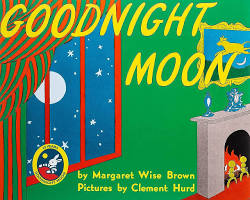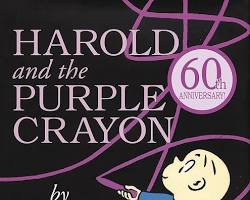The magic of children’s books extends far beyond the pages.
By incorporating crafts into your story time routine, you can create a deeper connection with the characters and themes, fostering creativity and imagination in young minds.
Here are 20 craft ideas inspired by beloved children’s books, catering to a variety of ages and skill levels:
The Very Hungry Caterpillar (Eric Carle):

- Materials: Construction paper, yarn, googly eyes, hole puncher.
- Craft: Punch holes along a long piece of construction paper to represent the caterpillar’s body. Cut out different colored shapes for the caterpillar’s features and food. Secure everything with yarn to create a movable caterpillar that “eats” its way through the story.
Chicka Chicka Boom Boom (Bill Martin Jr. and John Archambault):

- Materials: Cardboard box, paint, craft foam or construction paper (various colors).
- Craft: Paint a cardboard box to resemble a coconut tree. Cut out individual letters from craft foam or construction paper and decorate them with glitter or markers. Help your child climb and stick the letters on the tree, mimicking the story’s alphabet race.
Where the Wild Things Are (Maurice Sendak):

- Materials: Paper bags, markers, construction paper scraps, glue.
- Craft: Decorate brown paper bags to resemble the Wild Things with markers, construction paper cutouts for teeth and claws, and googly eyes. Let your child roar and stomp around the house, reenacting the adventure with their Wild Thing creation.
The Gruffalo (Julia Donaldson):

- Materials: Paper plate, brown paint, construction paper scraps, pipe cleaners.
- Craft: Paint a paper plate brown for the Gruffalo’s body. Cut out and glue on construction paper shapes for eyes, nose, and spines. Twist pipe cleaners for the Gruffalo’s prickly knees and tail. Read the story and have your child act out the different characters encountered by the Gruffalo.
The Rainbow Fish (Marcus Pfister):

- Materials: Paper plate, aluminum foil, tissue paper (various colors), glue.
- Craft: Cover half of a paper plate with aluminum foil to create the Rainbow Fish’s shiny scales. Crumple and glue different colors of tissue paper on the other half to represent the vibrant scales.
The Cat in the Hat (Dr. Seuss):

- Materials: Red and white construction paper, cardboard tube, markers, googly eyes.
- Craft: Cut out red and white striped sections from construction paper to wrap around a cardboard tube, creating the Cat in the Hat’s signature hat. Glue on googly eyes and draw a silly face for added character.
Corduroy (Don Freeman):

- Materials: Brown felt, buttons, pipe cleaners, stuffing.
- Craft: Cut out brown felt shapes to sew together into a simple bear shape. Decorate with mismatched buttons for eyes and a belly patch. Stuff the bear with cotton and add pipe cleaner whiskers for a cuddly Corduroy replica.
If You Give a Moose a Muffin (Laura Numeroff):

- Materials: Paper plate, brown paint, markers, construction paper scraps.
- Craft: Paint a paper plate brown for the moose’s head. Cut out construction paper shapes for the moose’s antlers and glue them on. Draw eyes and a hopeful expression. Pair this craft with other crafts inspired by the items the moose requests throughout the story.
The Very Quiet Cricket (Eric Carle):

- Materials: Paper bag, construction paper scraps, markers, glue.
- Craft: Decorate a brown paper bag with markers and construction paper cutouts to create a cricket. Add pipe cleaner legs and antennae. Throughout the story, encourage your child to act out the different sounds the cricket hears, becoming very quiet like the cricket himself when it’s time for him to sing.
We’re Going on a Bear Hunt (Michael Rosen):

- Materials: Brown construction paper, markers, cardboard tube (optional).
- Craft: Cut out different sections of a bear from brown construction paper. Glue or tape the sections together to create a large bear. Decorate with markers for eyes and a nose. Use a cardboard tube as a telescope for the bear hunt adventure.
The Paper Bag Princess (Robert Munsch):

- Materials: Paper bag, construction paper scraps, markers, glue, tin foil (optional).
- Craft: Decorate a brown paper bag with markers and construction paper to create a princess dress. Add glitter, sequins, or a crown made from construction paper or
Alexander and the Terrible, Horrible, No Good, Very Bad Day (Judith Viorst):

- Materials: Construction paper (various colors), markers, pipe cleaners, buttons.
- Craft: Create different scenes from Alexander’s terrible day on separate pieces of construction paper. Use markers, buttons, and pipe cleaner rain clouds to depict a spilled breakfast, a flat tire, and chewing gum in his hair.
Where the Sidewalk Ends (Shel Silverstein):

- Materials: Cardboard boxes, paint, markers, construction paper scraps, yarn.
- Craft: Transform cardboard boxes into whimsical creations inspired by Shel Silverstein’s poems. Paint a box green and add pipe cleaner leaves for a Giving Tree. Create a Lovestruck Ladybug with construction paper wings and googly eyes. Let your imagination soar!
Goodnight Moon (Margaret Wise Brown):

- Materials: Black construction paper, white paint, cotton balls, markers.
- Craft: Create a calming night scene on black construction paper. Use white paint for a crescent moon and dots for stars. Glue cotton balls for fluffy clouds. Encourage your child to point out the familiar objects mentioned in the book as you read along.
The Wonky Donkey (Craig Smith):

- Materials: Brown paper bags, markers, construction paper scraps, pipe cleaners.
- Craft: Decorate brown paper bags with markers and construction paper to resemble different farm animals mentioned in the story. Add floppy ears for the donkey, a curly tail for the pig, and a fluffy beard for the goat. Act out the silly stacking scene from the book with your child’s creations.
The Giving Tree (Shel Silverstein):

- Materials: Construction paper (brown, green), markers, buttons, yarn.
- Craft: Cut out a brown tree trunk from construction paper. Glue on green construction paper leaves to represent the tree’s full crown. As you read the story, progressively remove leaves and add buttons or yarn swings to depict the tree’s changing form.
The Three Little Pigs (Traditional Tale):

- Materials: Cardboard boxes (various sizes), paint, markers, construction paper scraps.
- Craft: Paint three different sized cardboard boxes to represent the pigs’ houses. Decorate one with straw (marker stripes), another with sticks (brown marker lines), and the last with bricks (red marker squares). Reenact the story with the wolf (a hand puppet) and the pigs hiding in their houses.
Harold and the Purple Crayon ( Crockett Johnson):

- Materials: White construction paper, purple crayon, markers (various colors).
- Craft: Let your child unleash their creativity! Provide them with white paper and a purple crayon. Encourage them to draw their own purple adventures inspired by Harold’s escapades. Once they’ve finished, add details and color with other markers.
Pete the Cat (Eric Litwin):

- Materials: Paper plate, blue paint, markers, construction paper scraps, buttons.
- Paint a paper plate blue for Pete’s body. Cut out construction paper shapes for his eyes, ears, and mouth. Glue on buttons for a cool Pete the Cat replica. Throughout the week, create different colored paper plate “shoes” for Pete as you read the stories about his adventures.
The Cat in the Hat Comes Back (Dr. Seuss):

- Materials: Cardboard box, red and white paint, markers, construction paper scraps.
- Craft: Transform a cardboard box into Thing One and Thing Two’s machine. Paint the box red and white with stripes. Cut out construction paper shapes for eyes, antennas, and funny expressions. Let your child manipulate the “machine” as you read about the mischievous Things’ return.
These are just a few ideas to get you started. Remember, the most important element is fostering creativity and having fun together!

